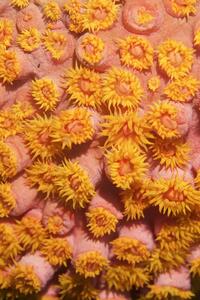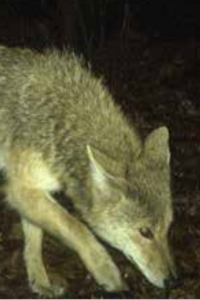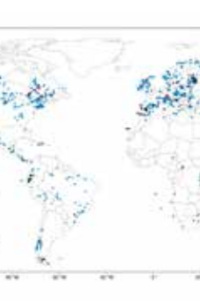Biodiversity and Ecosystem Sciences
YIBS started a new Seed Grants Program in 2022 with a focus on biodiversity and ecosystem sciences, which are major themes of both YIBS’ mission to support research in the environmental sciences and Yale’s University Science Strategy Committee (USSC) priority on Environmental and Evolutionary Sciences. This program was created to spark research that addresses themes relating to the maintenance, origins, and conservation of biodiversity, specifically at their interface with ecosystem dynamics.
2024 Projects
The role of deep roots in drought-induced mortality of Amazonian tree species
 |
Principal Investigators: Paulo Brando, Associate Professor of Ecosystem Carbon Capture, Yale School of the Environment Michelle Wong, Assistant Professor of Ecology & Evolutionary Biology Leandro Maracahipes, Associate Research Scientist, Yale School of the Environment Project Description: This project investigates the role of deep roots in determining drought resistance and survival of Amazonian tree species, focusing on the tree community in the Tanguro Ranch Long Term Research in Environmental Biology (LTREB) site in Brazil. As climate change and deforestation increase the frequency and intensity of droughts in southeast Amazonia, understanding the relationship between key plant functional traits—such as tree height, vessel resistance (P50), and rooting depth— and drought resistance is essential. To address this, we will collect fine roots and soil samples from cores up to 8 meters deep and apply a DNA metabarcoding approach to determine species-specific rooting depths for trees with known height and P50 values. We aim to test the hypothesis that taller trees are associated with deeper root systems and lower vessel resistance, making them more vulnerable to drought due to lower hydraulic safety margins. Additionally, we will examine how these traits correlate with species-specific mortality rates over the past 20 years, especially in response to recent droughts and drier conditions in the region. |
The fate of forests: predicting shifts in biodiversity, functional composition, and ecosystem dynamics
 |
Principal Investigators: Liza Comita, Professor of Tropical Forest Ecology, Yale School of the Environment; Co-director, Yale Center for Natural Carbon Capture Luke Browne, Associate Research Scientist, Yale School of the Environment Project Description: Forests harbor the majority of Earth’s terrestrial biodiversity and provide critical ecosystem services, including the regulation of regional and global carbon and water cycles. Given their importance, it is critical to understand relationships between biodiversity, function, and ecosystem dynamics in forests in the face of climate change. Leveraging extensive, long-term datasets from multiple forest plots in Panama, along with state-of-theart vegetation models, this project will assess how climate influences the diversity, composition, and dynamics of tree communities, advancing our understanding of forest vulnerability and resilience. The main objectives of the project are to (1) investigate how climatic variation influences the population dynamics of trees using a whole life-cycle approach, (2) understand how species’ life history strategies and functional types influence demographic sensitivity to climate, and (3) develop a predictive model to forecast the impacts of changes in climate on tropical forest biodiversity, functional composition, and ecosystem dynamics. The project will enable the development of a robust predictive framework and advance our understanding of forest resilience in the face of global change. |
2022 Projects
Biodiversity of Marine Invertebrates in Indonesia
 |
Principal Investigator: Casey Dunn, Professor of Ecology and Evolutionary Biology; Curator-in-charge of Invertebrate Zoology and Informatics, Yale Peabody Museum Project Description: The Indonesian Archipelago is vast, with more than 17,000 islands spanning an area about the size of the continental USA. Indonesia is at the heart of the Coral Triangle, a diversity hotspot for many groups of marine organisms. This abundance and diversity of marine animals is fundamental to the Indonesian economy, culture, and well-being, and fascinating in its own right. Different explanations for this extreme diversity have been proposed. The primary challenge to teasing apart these explanations is that the biodiversity of marine invertebrates in Indonesia remains poorly described, and understood, relative to many other regions. The Yale team will work with Indonesian scientist Dr. Hagi Yulia Sugeha and her students at the National Research and Innovation Agency (BRIN) to build local capacity for biodiversity research and initiate biological inventories and population studies of multiple marine species, including jellyfish. This project includes fieldwork in Indonesia, but that is paired with multiple visits by Indonesian scientists to Yale for training, museum work, and lab work. |
Coexistence of Tropical Understory Plant Communities
|
Principal Investigator: Simon Queenborough, Musser Director, Yale Tropical Resources Institute; Senior Lecturer & Research Scientist, Yale School of the Environment Project Description: The coexistence of hundreds of sympatric species within tropical forests remains an unsolved problem. Most studies have focused on trees. However, fitness (the net integrated result of growth, survival, and reproduction across its entire life cycle) is hard to estimate for such long-lived organisms. In contrast, most herbaceous plants complete their life cycle in much less time. Thus, estimating the direct effects of factors driving population growth rates and fitness (rather than proxies such as growth or mortality) is much more tractable. This project will monitor the distribution and population dynamics of a suite of herbaceous understory plant species over two years throughout a large environmentally variable 25-ha forest plot. We will link variation in local abiotic (topographic habitat, soil nutrients, water, and light availability) and biotic (local conspecific and heterospecific herb density, and local tree neighborhood) factors with functional trait data (seed size, specific leaf area and size) to (i) determine variation in population growth rates and (ii) to address the relative importance of spatiotemporal variation in these factors for mechanisms of coexistence and patterns of diversity. |
Climate and Climate Change
In 2023, the focus was shifted to climate and climate change, which are major themes of YIBS’ mission to support research in the environmental sciences and Yale’s University Science Strategy Committee (USSC) priority on Climate Solutions.
2023 Projects
Co-consequences of heat stress for urban mammals
 |
Principal Investigators: Nyeema Harris, Knobloch Family Associate Professor of Wildlife and Land Conservation, Yale School of the Environment; Director, Applied Wildlife Ecology (AWE) Lab Kai Chen, Assistant Professor of Epidemiology (Environmental Health), Department of Environmental Health Sciences, Yale School of Public Health; Deputy Faculty Director, Director of Research, Yale Center on Climate Change and Health Project Description: Climate induces changes in biodiversity that can amplify public health concerns especially in urban environments. An overlooked outcome of exposure to high ambient temperature is varied animal behaviour that affect human-wildlife interactions, exacerbating human-wildlife conflict. Here we use detection data compiled from camera trap surveys across 23 North American cities to investigate how heat stress metrics alter space use and activity patterns in conflict-prone mammals (e.g., deer, raccoons, and coyotes). Specifically, we obtain daily temperature data at camera locations to determine area- weighted average temperature and use general circulation models to project into 2100. With these data, we then investigate relationships to animal activity, species richness, and space use as well as apply proximity and hotspot tools to determine a zone of influence in the context of human population density. Ultimately, results from this project will identify the most vulnerable neighborhoods across North American cities to aid in designing interventions, building awareness, and promoting coexistence to ensure healthy human and wildlife populations as all urban dwellers cope with changing climates. |
Paleofire-climate variation in Africa: data-model comparisons since the Last Glacial Maximum for improved estimation of wildfire in the Earth system
 |
Principal Investigators: Jennifer Marlon, Research Scientist and Lecturer, Yale School of the Environment and Yale Program on Climate Change Communication Carla Staver, Associate Director, Yale Institute for Biospheric Studies; Associate Professor of Ecology & Evolutionary Biology Project Description: Fire activity is a major Earth system process, with strong feedbacks to both biosphere and atmosphere, but global climate models continue to fall short in accurately predicting future carbon cycle and climate changes from fires. Paleofire data from lake and marine sediment cores extend satellite and historical records of past fires enabling the evaluation and improvement of Earth system models under diverse environmental conditions. This project will produce new paleoecological records of highly fire-prone grassy ecosystems in Africa. Funding will also support collaboration with a Kenyan scholar to compile and synthesize existing paleoecological records into a global database from which we will construct global estimates of biomass burning since the Last Glacial Maximum, 21,000 years ago. The improved estimates of African and global fire activity will be compared with model outputs to improve estimates of pre-industrial fire emissions. Accurate fire emissions estimates are essential for understanding modern-day aerosol forcing and carbon storage in ecosystems, which can in turn support better policy and decision making about a wide range of climate change mitigation and adaptation options. |
